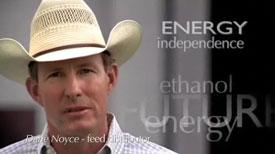 Rhode Island is looking to literally map out its wind energy future.
Rhode Island is looking to literally map out its wind energy future.
This story from the Providence (RI) Journal says that the state has enlisted oceanographers, engineers and other experts from the University of Rhode Island to determine where would the best places be for off-shore wind turbines… a massive $3.2-million effort:
Soon, the state is scheduled to select one of seven companies that have submitted proposals to build and operate wind turbines designed to meet Governor Carcieri’s goal of providing enough power to supply 15 percent of the state’s electricity. Cost estimates have run as high as $1.9 billion.
Rhode Island’s plan is to have the state’s Ocean Special Area Management Plan find the most suitable sites for wind turbines so Rhode Island can avoid the lengthy and costly controversy that has surrounded the Cape Wind project proposed for waters off Nantucket. Most other states have their energy offices or economic development personnel leading their wind-farm siting efforts. Massachusetts just enacted a law this year to plan uses of its coastal waters, but Rhode Island officials believe they are ahead because they have been doing such planning for decades.
Rhode Island officials believe this plan will make them the most competitive in the off-shore wind energy game.



 There’s someone new for you to meet at the National Biodiesel Board.
There’s someone new for you to meet at the National Biodiesel Board.
 Last year, EPIC and fuel supplier VP Racing Fuels introduced E10 to the Series. This season, EPIC brought in E85 as one of the fuel options. Corvette Racing and Aston Martin Racing have chosen to use only E85 during the racing season.
Last year, EPIC and fuel supplier VP Racing Fuels introduced E10 to the Series. This season, EPIC brought in E85 as one of the fuel options. Corvette Racing and Aston Martin Racing have chosen to use only E85 during the racing season. 
 The first two summits were held in Washington DC, but organizers say “the transitional stasis of a federal election year and the accelerated ambition of the states to pursue their own alternative fuel programs, prompted a venue change to Florida which is rapidly proving to be a pioneer in the quest for renewable energy.”
The first two summits were held in Washington DC, but organizers say “the transitional stasis of a federal election year and the accelerated ambition of the states to pursue their own alternative fuel programs, prompted a venue change to Florida which is rapidly proving to be a pioneer in the quest for renewable energy.”
 The ABE facility is designed to produce 65 million gallons per year of ethanol using regionally grown barley as the primary feedstock. According to the company, barley can be grown in double-crop systems with established food crops such as soybeans in the Mid-Atlantic region.
The ABE facility is designed to produce 65 million gallons per year of ethanol using regionally grown barley as the primary feedstock. According to the company, barley can be grown in double-crop systems with established food crops such as soybeans in the Mid-Atlantic region.  The
The  In “Faces,” local Hereford residents explain why ethanol is critical to America’s energy future. In “Places,” the geographic diversity of America’s ethanol industry is on display as the self-proclaimed “Beef Capital of the World” is also home to two ethanol biorefineries.
In “Faces,” local Hereford residents explain why ethanol is critical to America’s energy future. In “Places,” the geographic diversity of America’s ethanol industry is on display as the self-proclaimed “Beef Capital of the World” is also home to two ethanol biorefineries. 
 In a
In a